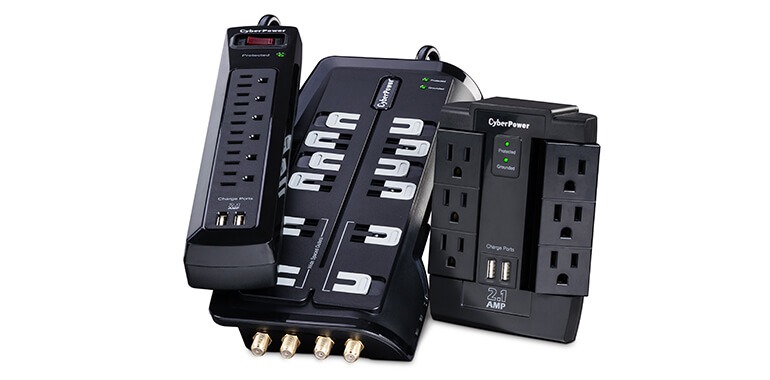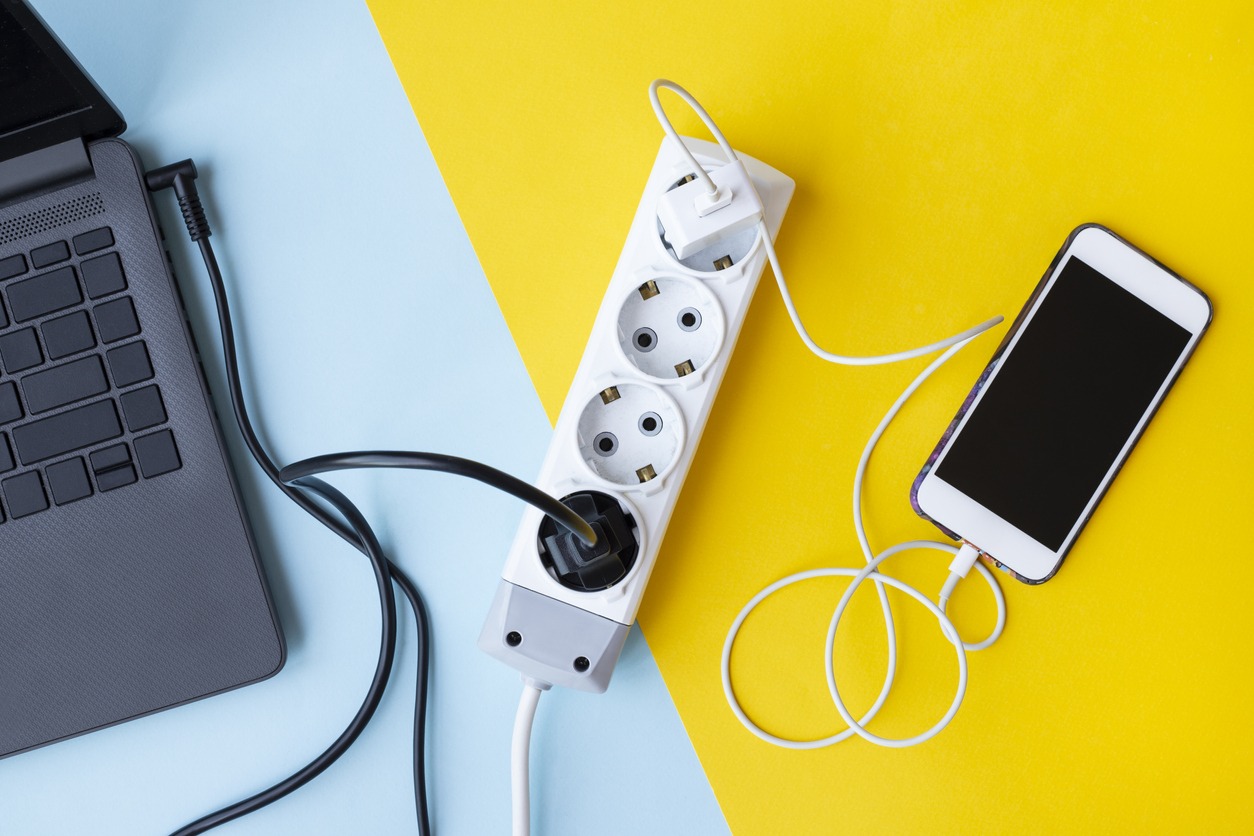Most households and establishments have more devices and appliances than plugs on the wall. And if you ever worry about your appliances and electronics getting zapped by a power surge, that’s the reason why you should have a surge protector behind your sound systems, HDTVs, workstations, or machinery.
All your devices and appliances are vulnerable to power surges. Especially if these appliances are large enough, a power surge can cause instant and permanent damage to them by “frying” the circuits and melting plastic and metal parts.
What is a surge protector? What does it do to protect your electronic devices?
A surge protector is a device that protects your appliances and devices from power surges or voltage spikes.
A surge protector basically acts as a buffer between your appliances and the live current coming out of the wall socket. It monitors the flow of electricity. If there’s a surge or spike in the electrical charge, the surge protector diverts that extra charge through a built-in grounding wire, preventing it from reaching your appliances and shutting them off, otherwise causing major or permanent damage.
The following lists a couple of reasons why you should see surge protectors as necessary:
- It’s an absolute must – to protect your home appliances and devices from getting seriously damaged by a high-voltage power surge. You’ll never know when a power surge will occur and cause permanent damage to your electronics, so it’s better to be safe than sorry.
- It’s beneficial, especially for lightning-prone areas. Some of the states in the US where lightning strikes frequently include Oklahoma, Texas, and most of all, Florida, which is even dubbed the “lightning capital of the US.” If you live in any of those states, having a surge protector is necessary.
Are “power surge” and “spike” the same?
When the voltage increase lasts only one or two nanoseconds, it’s called a spike. But when the voltage increase lasts three nanoseconds and above, it’s called a surge. That’s it – that’s the difference. But with even those minuscule nanoseconds – even just a billionth of a second – can cause significant or even permanent damage to your electronics, especially if the surge goes high enough.
Once you’ve learned the basics about surge protectors – while finally realizing that you’re using more devices than you can imagine – you’ll probably go to an online store and immediately place an order.
But before you get to purchase one, first things first: It is essential to know that not all surge protectors are created equal. Some may even put your devices at risk.
It is helpful to read online guides or, better, talk to a professional (preferably a qualified electrician) to help you buy the suitable surge protector for your needs.
Tips for buying the suitable surge protector
1. Know the difference between surge protectors and power strips
Many people believe that a surge protector and a power strip are the same. However, you’ll need to understand that not every power strip is a surge protector.
Power strips are usually cheap, multi-outlet devices that are mere extensions of a wall outlet. They typically have a circuit breaker or “on/off” switch of some kind, but most of them do not offer absolute protection from voltage spikes or power surges. While some power strips may offer a degree of protection to your devices, most are like outlets, only they’re not fixed onto the wall.
2. Buy the right number of ports
It is good to know that you should buy a surge protector that will exactly serve your power needs. However, don’t assume that every surge protector on the market has at least six or eight ports. Some models have 10 to 12 ports, and they are well-spaced so that you can use them all. Buying the one with the correct number of ports ensures that you don’t have to create a (potentially dangerous) “daisy chain” of surge protectors.
3. Consider the device you’re going to plug into the surge protector
Think about all the gear you’re going to plug into the surge protector that you’re planning to buy. While you can buy the one that you can afford, you’re going to save some money if you buy a surge protector that’s appropriate for the equipment that will be powered. For example, your HDTV or home entertainment center will need a more robust surge protector than your lamp or smartphone charger.
4. Check for the UL safety seal
Make sure that the surge protector you’re planning to purchase is certified safe by Underwriters Laboratories (UL). A surge protector must at least meet the 1449 UL standards to be considered safe, which is required for the label “transient voltage surge suppressor.” These specifications will ensure that the surge protector you buy will protect the electronic devices you plug into it and not put them at risk.
5. Know a surge protector’s joule rating
A surge protector offers protection in amounts called joules. Its joule rating or absorption rating represents how much energy it can absorb before it fails (and your gear will now be in danger). The higher number of joules, the better protection that a surge protector provides to your device.
Surge protectors don’t usually display how many joules of protection are left, but most models feature a LED indicator that lets you know protection is there. Once the light goes off, it’s an indication that a surge protector should be replaced before it can inflict severe damage to your devices. However, these lights might be ignored or cannot be immediately seen when surge protectors are placed behind a home entertainment system or under a work desk.
No surge protector lasts forever, but at least it should last for a long time. The parts and components inside it wear down over time, thus reducing its effectiveness. If your current unit has been in use for several years, then it’s time to invest in a new surge protector – it will bring you greater peace of mind.
6. Check the warranty
Some models offer a warranty (up to a certain amount) on the device connected to them if a voltage spike or power surge does get through. Check to see what the warranty covers (and what it doesn’t) and how you can file a warranty claim in the event the device fails to protect.
Conclusion
While you do not need to worry about plugging every appliance into a surge protector, it is still a good idea to use one to safeguard your big, essential electronics from getting seriously or permanently damaged during a power surge.


